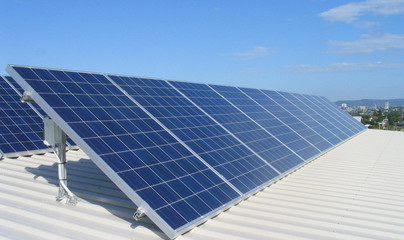Photovoltaic effect: How to convert sunlight into electricity

Today we're going to talk about the photovoltaic effect and see how that sunlight turns into electricity! The photovoltaic effect, which means that a beam of light on certain materials can, hey, produce a voltage or a current! This is the basis of modern solar technology and is used extensively in the manufacture of solar cells. The principle of the photovoltaic effect is both simple and profound, related to the particle properties of light, the physics of semiconductors and the generation of electric currents. If we understand the photovoltaic effect, we can make better use of solar energy and make renewable energy more prosperous.
What about the particle nature of light? Light is not only a wave phenomenon, but also a stream of particles composed of photons. The photon hits the substance and the substance absorbs it. The energy of a photon is inversely proportional to its wavelength. Photons with shorter wavelengths, such as ultraviolet light, have higher energies. Photons with longer wavelengths, such as infrared, have lower energy. After the photon is absorbed by the material, that energy can excite the electrons in the material, making the electrons jump from the valence band to the conduction band, and thus have free electrons and holes!
Let's talk about semiconductor materials. The photoelectric effect generally occurs in semiconductor materials. Semiconductors that conduct electricity between conductors and insulators are silicon (Si), gallium arsenide (GaAs), copper indium gallium selenide (CIGS) and other common semiconductor materials. In photovoltaic cells, silicon is the most commonly used material. The band structure of silicon allows it to efficiently absorb photons, which then create electron-hole pairs.
This kind of silicon photovoltaic cell is mainly divided into monocrystalline silicon and polysilicon in two kinds. Monocrystalline silicon cells are made of single crystal structure, and the photoelectric conversion efficiency is relatively high, generally between 15% and 22%. Polycrystalline silicon cells are composed of several crystals and have low manufacturing costs, but the photoelectric conversion efficiency is also relatively low, generally between 13% and 17%.
How do photovoltaic cells work? The steps are as follows:
The first step is light absorption. When sunlight hits the surface of the photovoltaic cell, photons are absorbed by the semiconductor material, and this absorption excites electrons to jump.
The second step is the formation of electron-hole pairs. The energy of the photon allows electrons to move from the valence band to the conduction band, forming free electrons and holes.
The third step is the formation of an electric field. Photovoltaic cells usually have an electric field inside them. Where does this electric field come from? When you mix different elements, such as phosphorus and boron, into a semiconductor material, an in junction is formed. There are more holes in P-type semiconductors and more free electrons in N-type semiconductors.
The fourth step is to generate electricity. Under the action of the electric field, the free electrons run to the N-type region, and the holes run to the P-type region. This operation produces electricity. By attaching a load to both ends of the battery, the current can be drawn out and used by an external circuit.
A complete photovoltaic system consists of several parts, including photovoltaic panels, CAT885ZGI-SA-A0 inverters, bracket systems and battery energy storage systems. Photovoltaic panels are the heart of the photovoltaic system and are specifically responsible for converting sunlight into electricity. The panels are made of many photovoltaic cells strung together or combined, which can improve the output of voltage and current.
Inverters mainly convert direct current (DC) generated by photovoltaic cells into alternating current (AC), so that homes and factories can be used. The inverter must also pay close attention to the performance of the system to ensure that the photovoltaic system can operate efficiently. The bracket system is used to hold the photovoltaic panels so that the panels receive sunlight at an optimal Angle. The design of the bracket must take into account wind, snow and other factors to ensure the stability and safety of the system.
Battery energy storage systems are used to store excess electricity, so that there is electricity when the sun is not enough. Energy storage systems can make photovoltaic systems more self-sufficient and less dependent on the grid. From small household devices to large solar power plants, the photovoltaic effect is everywhere. As technology advances and costs decrease, photovoltaic power generation is slowly becoming a reliable clean energy solution.
Now,more and more homes install photovoltaic systems, which can save electricity and reduce carbon emissions. Household photovoltaic systems are generally photovoltaic panels, inverters and battery energy storage systems, which can generate electricity when the sun is good, and can also be used at night or on cloudy days.
Many companies and factories are also actively using PV technology, which can reduce operating costs and achieve sustainable development goals. Commercial photovoltaic systems are generally large in scale and can meet the needs of high energy consumption of enterprises. Large solar power plants, which concentrate on the photovoltaic effect, can power many homes and businesses. These plants are usually located in sunny areas and use large areas of photovoltaic panels to generate electricity.
In the future, the global demand for renewable energy continues to increase, and photovoltaic technology continues to develop. Researching new materials, improving the efficiency of photovoltaic cells and optimizing system integration are all important directions for the development of photovoltaic technology in the future. Through continuous innovation, the photovoltaic effect can provide us with cleaner and more sustainable energy solutions.
관심을 가질만한 제품
 |
AOZ6186QT#A | IC USB 2.0 SWITCH 10QFN | 7074 More on Order |
 |
AOZ1051PI-2 | IC REG BUCK ADJUSTABLE 3A 8SO | 4032 More on Order |
 |
AOZ1038PI | IC REG BUCK ADJUSTABLE 6A 8SO | 7704 More on Order |
 |
AOZ1031AI | IC REG BUCK ADJUSTABLE 3A 8SOIC | 232176 More on Order |
 |
AO6604L_001 | MOSFET N/P-CH 20V 6-TSOP | 4716 More on Order |
 |
AO4830L | MOSFET 2N-CH 80V 3.5A 8SOIC | 2088 More on Order |
 |
AO4812_101 | MOSFET 2N-CH 30V 6A | 8982 More on Order |
 |
AO4886 | MOSFET 2N-CH 100V 3.3A 8SOIC | 2232 More on Order |
 |
AO4423_101 | MOSFET | 3454 More on Order |
 |
AOTF20S60_900 | MOSFET N-CH TO220 | 5256 More on Order |
 |
AON7400AL_102 | MOSFET N-CH 30V DFN | 3294 More on Order |
 |
AOD4TL60 | MOSFET N-CH DPAK | 6678 More on Order |
 |
AO4476AL | MOSFET N-CH 30V 8SOIC | 5058 More on Order |
 |
AOTF10N60_003 | MOSFET N-CH 600V 10A TO220F | 7488 More on Order |
 |
AOT416L | MOSFET N-CH 100V 4.7A TO220 | 8820 More on Order |
 |
AON7556 | MOSFET N-CH 30V 12A | 4104 More on Order |
 |
AON6411_001 | MOSFET P-CH 20V 47A 8DFN | 8766 More on Order |
 |
AOT416 | MOSFET N-CH 100V 42A TO-220 | 4248 More on Order |
 |
AOTF10N50FD | MOSFET N-CH 500V 10A TO220F | 7182 More on Order |
 |
AON7462 | MOSFET N-CH 300V 0.9A 8DFN | 3924 More on Order |
 |
AOT266L | MOSFET N-CH 60V 18A TO220 | 18096 More on Order |
 |
AOT11S60L | MOSFET N-CH 600V 11A TO220 | 17784 More on Order |
 |
AO3403 | MOSFET P-CH 30V 2.6A SOT23 | 242424 More on Order |
 |
AOZ8006FIL | TVS DIODE 5V 16V 10MSOP | 5076 More on Order |









